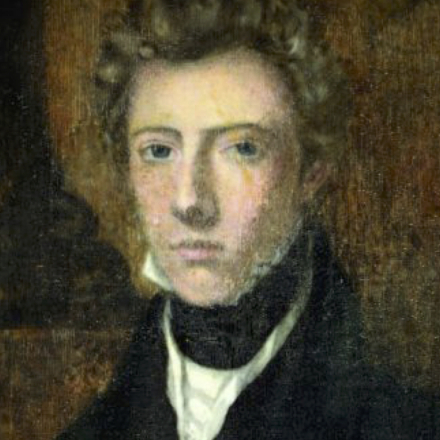Tell me your secret, Doctor James: Victorian and contemporary representations of historical gender crossing

This masterclass takes as its focus a spectacular case of historical transgender to examine the resonance of notions of sex/gender instability in Victorian, twentieth century and contemporary depictions of James Miranda Barry (1789?-1865). James Barry graduated in medicine from Edinburgh in 1812, entered the medical branch of the British military in 1813, and from 1816-1859 served as a medical officer, humanitarian and sanitary reformer in the British colonies (Cape Colony, Mauritius, Jamaica, Windward and Leeward Islands, St Helena, Malta, Corfu, and Canada). As Inspector General he attained the highest rank in the medical branch of the British military. After his death in 1865 sensational claims were made about his body having been that of a woman. It was not until the 1980s that evidence of Barry’s female birth identity was found. How did Victorian contemporaries respond to these disclosures? Are there any similarities between Victorian and contemporary constructions of the figure of the gender crosser? How is transgender represented in textual format? Do biographers use different textual strategies from novelists and playwrights? These are some of the questions this two-hour session seeks to explore.
Participants should RSVP to kate.mitchell@anu.edu.au
The session is organised into four parts:
- Historical and biographical context: A brief outline of the history of the ‘discovery’ of transgender will place Barry in the contexts of the earlier figure of the Chevalier d’Eon and later, turn-of-the-19th-century sexology’s conceptualization of the ‘intermediate’ sex and transvestism. This will be followed by an overview of what is known of Barry’s life.
- The Victorian response: Contemporary representations of Barry: This will involve discussing the first newspaper reports that broke the story, responses by a fellow officer, and the first biofiction on Barry, ‘A Mystery Still’, published two years after his death in Dickens’s All the Year Round.
- Depicting Barry: discussion of cartoons and cover illustrations, from the Victorian period to the contemporary
- Re-imagining Barry today: discussion of contemporary constructions of Barry in biography, biofiction and biodrama
Texts to be discussed (in chronological sequence; please read prior to session):
‘A Female Medical Combatant’, Medical Times and Gazette, 26 August 1865, pp.227-28
Edward Bradford, ‘The Reputed Female Army Surgeon’, Medical Times and Gazette, 9 September 1865, p.298
‘A Mystery Still’, All the Year Round, 18 May 1867, pp.492-95.
Isobel Rae, Preface and chapter 1, The Strange Story of Dr James Barry: Army Surgeon, Inspector-General of Hospitals, Discovered on death to be a Woman (London: Longmans, Green and Co, 1958), pp.v-vii, pp.1-14
June Rose, ‘Prologue’ to The Perfect Gentleman: The remarkable life of Dr James Miranda Barry, the woman who served as an officer in the British Army from 1813 to 1859 (London: Hutchinson, 1977), pp.11-16
Patricia Duncker, [From] ‘The House in the Country’ [Part One], James Miranda Barry (London: Serpent’s Tail, 1999), pp.3-384
Rachel Holmes, Preface and ‘Betwixt and Between’ [chapter 1] of Scanty Particulars: The Life of Dr James Barry (London: Penguin, 2003), pp.1-33
Sebastian Barry, [From] Whistling Psyche, in Whistling Psyche and Fred and Jane (London: Faber and Faber, 2004), pp.43-49
Michael du Preez and Jeremy Dronfield, ‘Prologue’ and chapter 1 of Dr James Barry: A Woman Ahead of Her Time (London: Oneworld, 2016)
See also: Gilmore and Roberts’ lyric ‘Doctor James’, The Innocent Left (2012), https://soundcloud.com/gilmoreroberts/doctor-james






